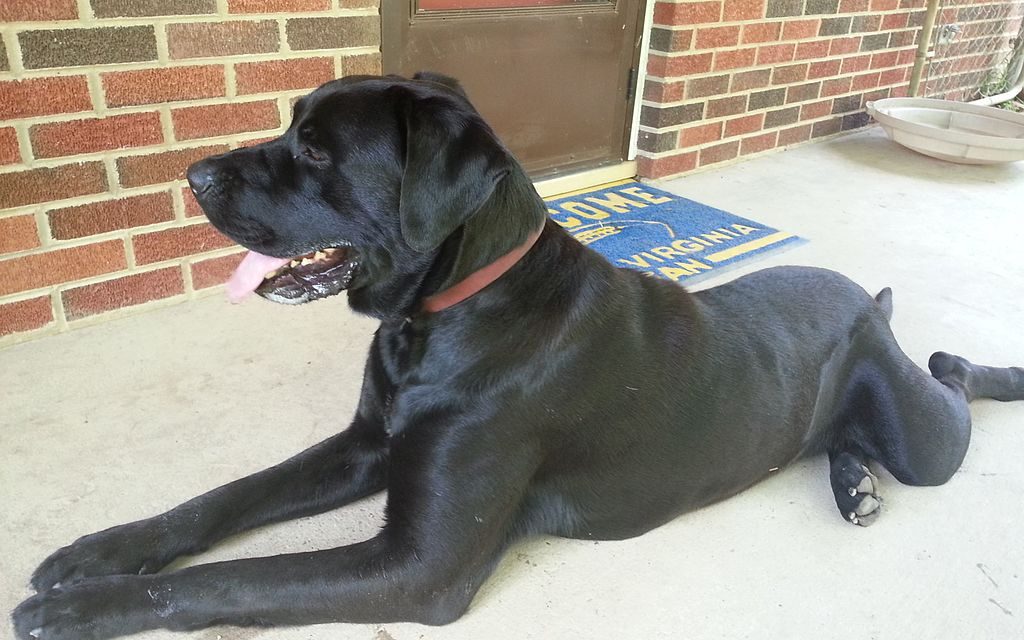The name Mastador might be confusing in the beginning as it is not a very common breed. It is not a pure breed at all, like the German Shepherd or the Great Dane. A Mastador is a mix between a Mastiff and a Labrador.
The traits that you will find in this breed have been passed on by its purebred parents. Termed as a “designer dog,” the Mastador is both protective (like a Mastiff) and friendly (like a Labrador). The breed makes a great family dog and is especially good with kids.
If you are looking for a dog for your family, you need to consider the temperament of the Mastador before you consider it as an option. These dogs need experienced owners who can establish themselves as the pack leader. The dog has a high energy level and is 28 to 36 inches in size, so you might want to consider that for your house.
Basic Details
The Bullmastiff is originally from the UK and the Labrador comes from Canada, so the guess is that the mix between the two started in the US. Currently, no breeder has claimed to be the creator of the breed, so it’s not clear where the breed started.
However, these dogs have been around for the past 15 or 20 years. Some of the basic information of the dog breed is as follows:
- Weight: 100 to 160 pounds
- Height: 28 to 36 inches
- Lifespan: 11 to 16 years
- Temperament: Devoted, loving, brave, active
- Best for families with people who have the time to meet their energy requirements
Food/Diet
Every pet needs a good and balanced diet to stay healthy and active, and so does the Mastador. You have two options for the breed: high-quality dry food or homemade food.
If you opt for the dry food, you must remember that it will not settle for just any kibble. You need to make sure that you give it kibble that is specifically built for athletic and large dogs. Also, you need to make sure that the kibble you choose is age-specific; there are different ones for puppies, adults and senior dogs (all formulas are different).
If you opt for homemade food, it is best to cook whatever you give. You can also add different types of veggies in the meat to ensure it has a well-balanced diet. There is a whole list of vegetables and fruits that you can give and cannot give to your dog, so make sure you know the list inside out before you add any veggies to its food.
Training
One of the best things about these intelligent dogs is that they are quite easy to train. With consistent training, they will be able to understand your commands and be able to perform tricks as well. It is best to implement the reward system while training them.
Even if you don’t have time to train them, it’s okay as these dogs do great with other people training them. But remember that you must make yourself the pack leader.
Weight
The weight of your puppy will depend on its gene pool, that is, which purebred’s gene is more dominant. This is why there can be a great difference between dogs of the same breed. The weight can range from 100 pounds to roughly 200 pounds.
Temperament/Behavior
The best words to describe this breed are affectionate, devoted and mild-tempered. This breed is quite protective of its family and will guard them against any type of danger. However, it is hardly aggressive with the people it knows, which is why it is considered to be a great family dog. It is friendly and sweet, though if it gets bored, it can become destructive as well.
Common Health Problems
These dogs generally have great health, but they can experience some illnesses that large dogs experience. These include heart issues and hip dysplasia when they get older.
Exercise Requirements
The Mastadors are skilled jumpers and are highly energetic and active dogs, which is why you need to take them out for long walks daily and take out time to play with them. The dogs can be kept indoors or outdoors, but remember that they don’t do so well in the cold.
Coat
These dogs have a short yet soft and silky coat. The colors of the coat can be different, depending on the color of the parents, but they will have a white patch on their paws and bellies. They don’t need too much grooming; a gentle brush once a week would be enough for them.











